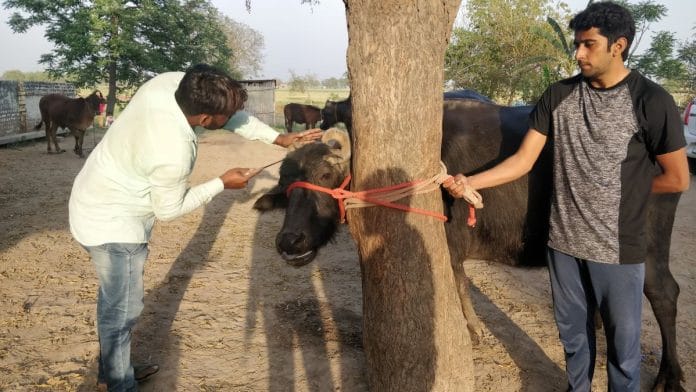New Delhi: When he enrolled in the agricultural graduate degree college, 28-year-old Satnam Singh was determined not to fall victim to unscientific farming practices and remain committed to ‘modern farming education’. He wanted to carry forward his family’s farming legacy in Punjab’s Ferozepur—and make it more 21st century-friendly.
But his BSc in agriculture and MSc in agronomy from Tiwari Agriculture Institute in Meerut, Uttar Pradesh, taught him something that was stuck in the scarcity-and-hunger time warp of India’s Green Revolution era.
So when it was finally time to get his boots dirty, he realised that farmers knew far more than what his textbooks had taught him.
“I have learned more about modern-day farming through working with farmers than I did in classrooms,” Singh said.
His education had been confined to classrooms with outdated textbooks and little focus on employable skills—highlighting the need for Indian agriculture education reform.
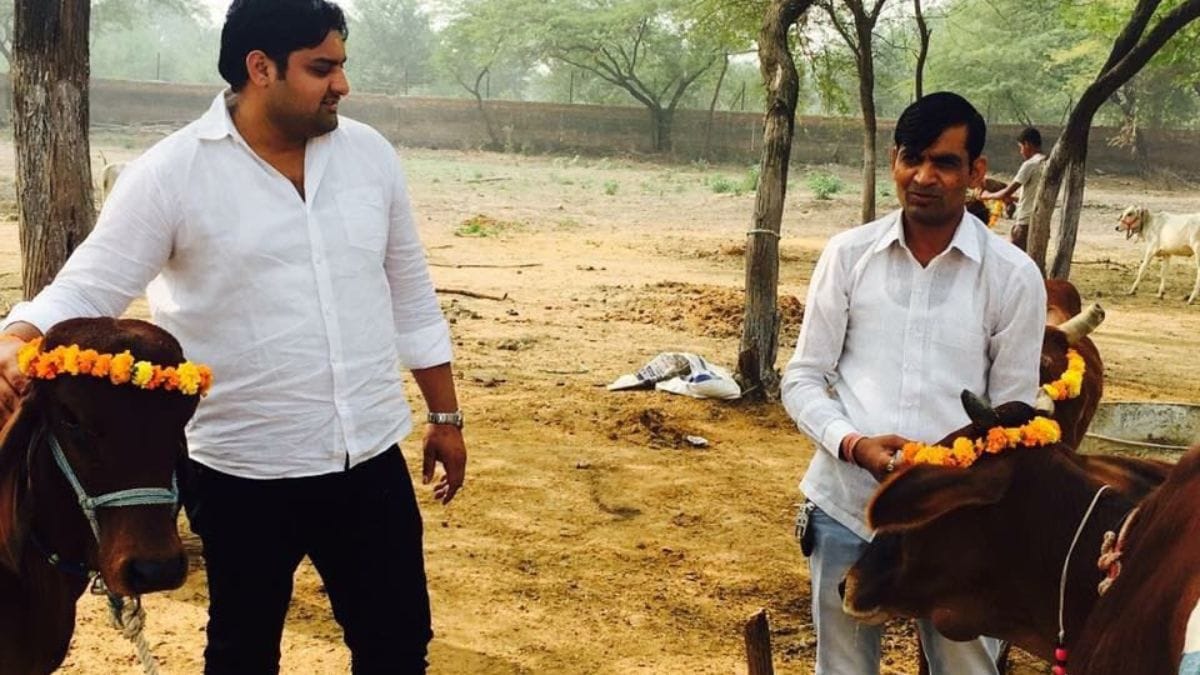
Singh’s experience is a reflection of the sorry state of India’s agricultural education, where the curriculum hasn’t emerged from the dominant focus on maximising crop yields.
While course revisions have been proposed in the past, institutes often ignore these recommendations because they are not mandatory.
Modern agriculture is the big gaping hole in policymaking—and it starts with an outdated education system.
When Singh returned to his village in 2019, he thought he would become a “messiah” for farmers. He had founded a startup, ‘Agri-mantra,’ aiming to make farming equipment accessible to small and medium landholders.
I have learned more about modern-day farming through working with farmers than I did in classrooms
But over the last few years, it is these farmers who have been educating him—on the latest technology, artificial intelligence, modern techniques, global markets, new seed variants, and climate adaptation strategies.
Avinash Kishore, a senior research fellow at the International Food Policy Research Institute, said Indian agricultural institutes are caught in an “incestuous trap” where educators simply teach what they themselves learned decades ago.
However, things might finally change. The Indian Council of Agricultural Research (ICAR)—the autonomous body coordinating agricultural education—has recommended an overhaul of the curriculum to bring it up to speed.
The introduction of skill enhancement courses, entrepreneurial opportunities, and mandatory internships in undergraduate programmes aims to prepare students for the competitive job market.
Experts say these reforms could help institutes address modern challenges like climate change, population growth, soil degradation, technological advancements, and the rising role of private players in the industry.
“In its present state, I would say an economics graduate from a decent university is learning more about agriculture economics, social sciences, and market systems than an agricultural sciences student does,” Kishore said.
He added that while institutes have made advancements in equipment, the pedagogy is still lacking.
“Most of India’s agriculture institutes are educational and research centres rolled into one, so they have immense potential for setting up experiment-oriented systems. But that is not happening,” he said.
In its present state, an economics graduate from a decent university is learning more about agriculture economics, social sciences, and market systems than an agricultural sciences student does
Also read: How to climate-proof Indian agriculture through innovation – from fertiliser to farmer networks
The state of Indian agricultural education
In India, the Indian Agricultural Research Institute (IARI) in New Delhi is the premier institute for agricultural education, with fancy labs, latest gadgets, and high campus placements. But even its closest competitors struggle to match IARI’s facilities and curriculum advancements, centralising quality agricultural education to just one institute.
This disparity is reflected in the latest National Institutional Ranking Framework (NIRF) rankings. In the ‘quality of publication’ parameter (worth 40 marks), IARI scored 38.69. It also scored 10.50 out of 15 for patents granted.
Punjab Agricultural University, ranked third, scored only 29.87 for publication quality and 4.5 for patents granted.
The situation is worse for smaller institutes. West Bengal’s Uttar Banga Krishi Viswavidyalaya scored just 5.87 for publication quality and zero for patents granted.
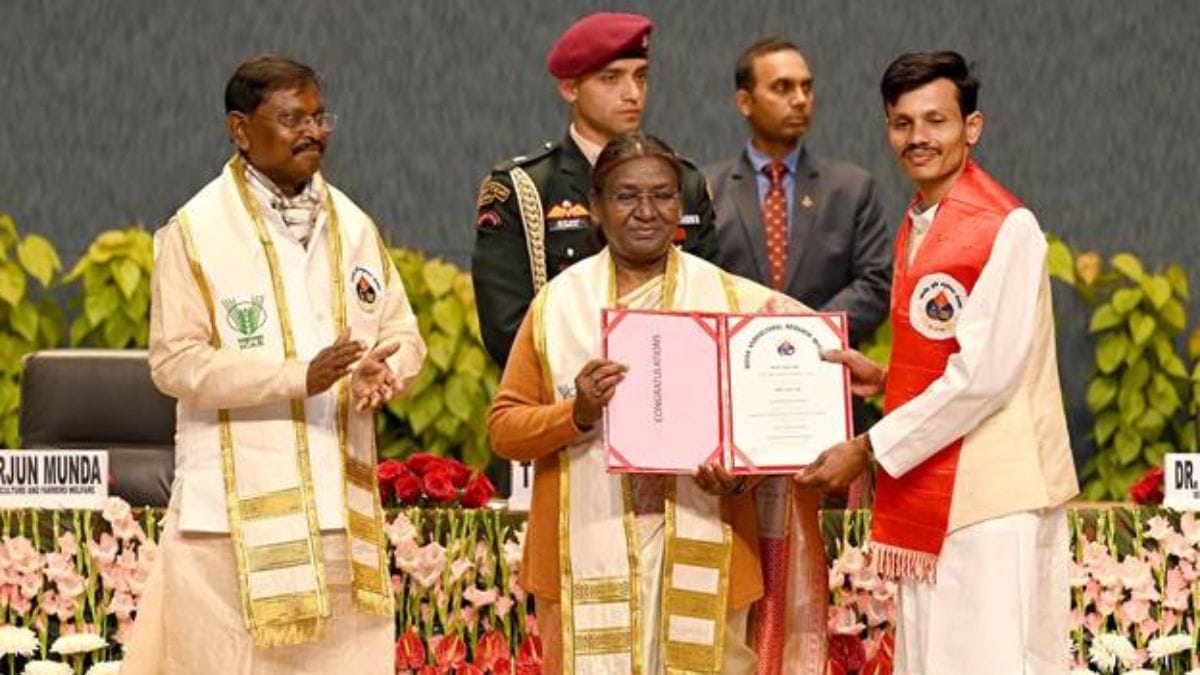
Data shows students are increasingly looking abroad for better education. According to ForeignAdmits, since 2020, there has been a 30 percent year-on-year increase in enquiries for agricultural courses in foreign universities, with a 75 percent jump in 2023 alone.
Countries like Canada, New Zealand, and Australia are attractive destinations for programmes in agribusiness, food safety, and environmental sustainability.
Textbooks are another story.
One of Singh’s first-year textbooks, the 2015 ‘Principles and Applications of Agricultural Meteorology,’ ignores modern forecasting technology and does not address climate change. It discusses using ‘altostratus clouds’ to predict monsoons—even though, according to the India Meteorological Department (IMD), these clouds haven’t appeared in the tropics for over a decade.
Other texts, like the 1972 ‘Introduction to Plant Biochemistry’ by TW Goodwin and the 2004 ‘Introductory Soil Science’ by DK Das, are relics of a bygone agricultural era.
Also read: Indian agriculture is ‘a walled-off garden stuck in the 60s’. Private investment is the answer
ICAR reforms: modernise Indian farming
In the Yamuna floodplains, Dhruv Singh, a third-year BSc Agriculture student at IARI specialising in entomology, soil science and agricultural chemistry, waves a metal stick over the soil. It’s connected to a pager-like compact device that his class designed to detect moisture and nutrient content.
“This equipment can help farmers assess soil conditions before growing their crops,” Singh said. The device is still in trials, but it’s exactly the kind of innovation ICAR’s curriculum reforms aim to encourage.
Under the Sixth Deans’ Committee Report, ICAR introduced skill enhancement courses, made internships mandatory, and proposed integrating machine learning, AI, and robotics into agriculture courses.
The goal is to improve employability, practical knowledge, and entrepreneurship skills.
Since the report’s release, some smaller institutes have already started adopting the recommendations.
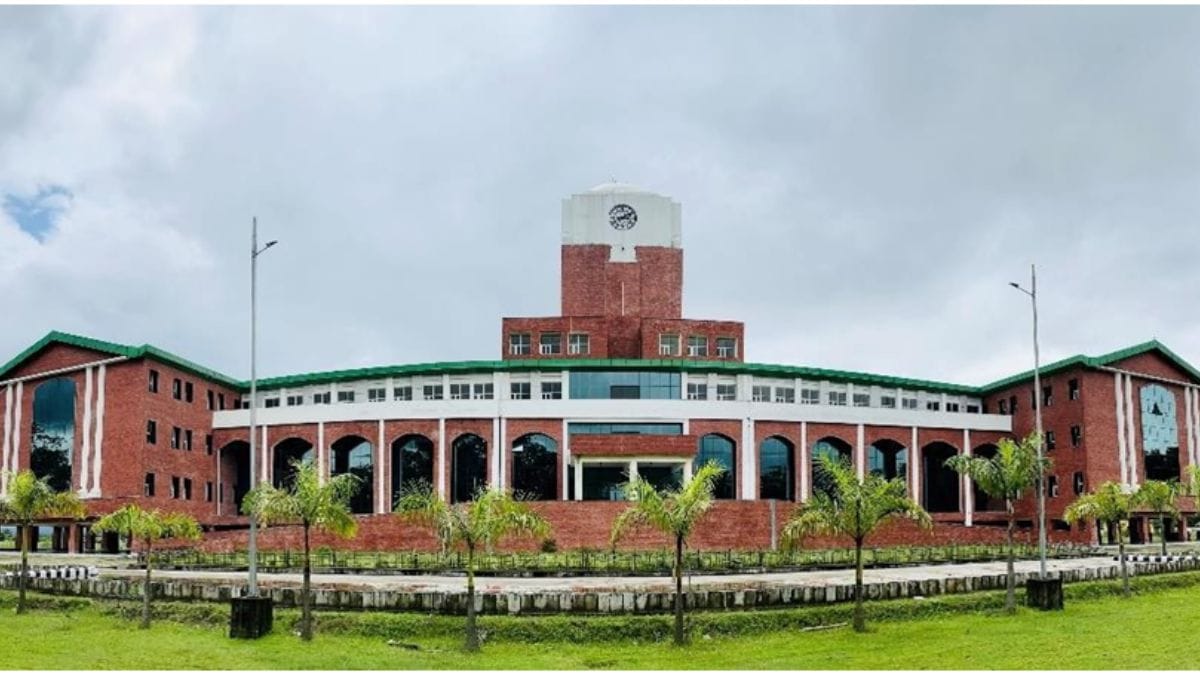
Jammu and Kashmir’s Sher-e-Kashmir University of Agricultural Sciences and Technology, the first agricultural college to adopt ICAR’s revised curriculum, is planning new departments focused on modern farming. It’s also exploring exchange programmes with foreign universities.
SR University, in Telangana’s Warangal, has introduced a multi-entry and exit system to provide students with flexibility, while modernising labs and enhancing digital resources.
“This reform is expected to significantly contribute to the government’s ‘Atmanirbhar Bharat’ initiative by empowering the next generation of agri-innovators and policymakers,” said M Mohana Keerthi, head of SR University’s school of agriculture.
Also read: MSP isn’t the real issue. Indian farming has changed, so should protests
Green Revolution impact on education
A 2021 study by IARI researchers highlighted that most agricultural institutes don’t adhere to the National Education Policy (NEP) 2020. The NEP aims to reform school and higher education by adopting modern practices in the system.
Despite advances like precision farming, big data analytics, and gene editing and other relevant advancements in science, these topics are missing from the curriculum in most institutes.
“Training needs of faculty of agricultural universities are not given due importance, the evaluation system doesn’t promote the creativity of students, and curriculum is not updated to incorporate the advances in science,” the study noted.
Between 1947 and 1960, India’s food production was insufficient for its growing population. With only 417 grams of food available per person per day, India was staring at a famine even as farmers were in heavy debt.
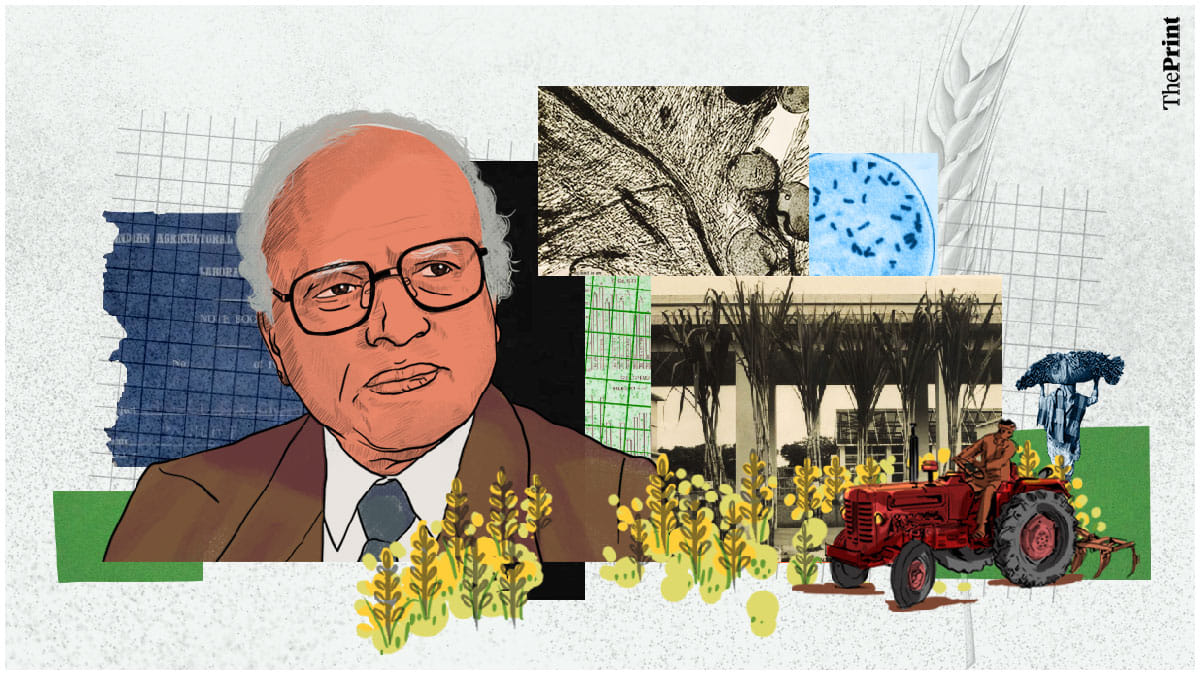
The focus turned to large-scale use of chemicals and pesticides and development of high-yield varieties. The project’s success began shaping India’s agricultural policies, including changes in education and research. But recommendations that birthed the Green Revolution were meant to solve a temporary crisis—not dictate agricultural policy forever.
Pradyuman Kishori, a Mumbai-based trade market analyst and agriculture policy expert, said that agriculture today involves not just farming but also horticulture, forestry, gender dynamics, water management, and more. Yet, agricultural studies in India continue to have a unilateral approach.
“These institutes are overlooking a wide scope of opportunities in agriculture education,” Kishori said.
New courses can address the issue.
Also read: Everyone agrees farm reforms are needed. Here’s how Modi govt can break political deadlock
Agriculture universities: adopt modern farming techniques
India’s top institutes are showing the way.
IARI runs nearly 800 programmes, covering everything from microbiology and genetics to floriculture, bioinformatics, and agricultural statistics.
“While upgrading our curriculum, we try to set an example for smaller universities and institutes, which can replicate our models to improve their courses,” said AK Singh, IARI’s director.
Bengaluru’s University of Agricultural Sciences offers seven undergraduate courses, 26 master’s, and 17 doctoral programmes, covering unique disciplines like apiculture, sericulture, and organic farming.
Selvaraju, a 22-year-old student at the university, said the work done by agriculture scientists helps the entire nation, but governments are failing to provide them with new opportunities and training.
He hopes the curriculum reforms will help students like him excel.
“It was like we were being pushed to run for the Olympics with bare feet. But now that we have shoes, we might script a new record,” he said.
Also read: Are Indian farmers pampered or taxed? OECD and WTO are saying two opposing things
Key questions on Indian agriculture and education
1. What is wrong with Indian agriculture today?
India’s agriculture faces challenges like outdated practices, low productivity, and heavy dependence on monsoons. However, a major overlooked issue is the Indian agriculture education system, which often lags behind modern farming techniques and sustainable practices.
2. How does agricultural education affect farming outcomes in India?
Universities play a critical role in shaping farming practices. If curriculums don’t teach modern methods, research-driven solutions, or market strategies, farmers miss out on innovations that could boost yields, mitigate education risks, and improve profitability. This disconnect perpetuates cycles of low productivity and prevents farmers from accessing new markets and technologies.
3. Why is Indian agriculture education outdated?
Indian agriculture education often lags behind due to a rigid curriculum that fails to integrate contemporary issues like climate change, precision farming, and global market dynamics. Many agriculture universities continue to prioritise traditional practices, leaving students unprepared for challenges in modern agriculture.
4. What are ICAR’s new recommendations for agriculture institutes?
ICAR has proposed curriculum updates to include courses on climate-resilient farming, biotechnology, and agribusiness management. These changes aim to make graduates more equipped for evolving industry demands and global competition.
5. Which universities in India offer modern agriculture courses?
Institutions like Tamil Nadu Agricultural University (TNAU), Punjab Agricultural University (PAU), and the University of Agricultural Sciences, Bengaluru, have started adapting to modern needs. They offer specialised courses on sustainable agriculture, precision farming, and agri-tech innovation.
6. Can curriculum reform improve India’s agricultural output?
Yes, updating the curriculum to include contemporary practices can empower future agronomists with the tools to address issues like soil degradation, water management, and market access. This knowledge can directly translate into more efficient and sustainable farming practices.
7. What role do policymakers play in Indian agriculture education reform?
Policymakers influence funding, research priorities, and university mandates. Their support is crucial for implementing curriculum reforms, fostering public-private partnerships, and promoting knowledge dissemination to farming communities.
8. How can India balance agricultural modernisation and traditional knowledge?
Blending traditional practices with modern innovations is key. Agriculture universities should promote research that refines indigenous techniques while integrating advancements in irrigation, crop genetics, and market forecasting to create a balanced, resilient agricultural system.
(Edited by Prashant)



